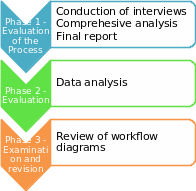Introduction
Claims management refers to the process of recognizing, evaluating, and responding to requests for compensation. Expertise in insurance legislation, investigative, fraud prevention is required to handle payment claims. Since it is a critical business procedure; clients expect superior and faster services. Companies that are sparing with this technique risk losing clients and reputations over time. Insurance companies are expected to resolve claims quickly and effectively. Reducing the time taken to pay insurance claims is a good method of reducing customer unhappiness and improving service delivery. Higher levels of client satisfaction can provide a firm with a competitive advantage. Thus, claims management is seen as a vital approach for improving the image of the insurance industry.
The chargemaster is responsible for making sure that hospitals get paid for the services they deliver. Chargemasters are documents that list the costs of treatments, drugs, and equipment. In the current hard economic environment, chargemaster management tools go beyond established coding standards to identify additional revenue streams. The foundation of this type of revenue inflow for hospitals is a trustworthy and updated chargemaster. An inadequate chargemaster might result in revenue loss, legal liabilities, and even annoying and exorbitant prices for patients (Vial, 2019). In addition, the financial status of an enterprise is determined by the level of chargemaster maintenance.
The Best Practices
One great strategy is the formulation of a long-term strategic budget for the chargemaster. This budget ought to be drafted to cover more than the incoming program. Given the variety of alternatives, it’s crucial to keep in mind that a more or less thorough program comes with compromises. Pricing data analytics can also be built into a process, reducing consulting project timeframes, and more thorough systems can generate financial gains while avoiding fines. Adjustments to the chargemaster system have a positive influence on employee training costs. Moreover, additional savings are realized if the software is robust.
Another strategy is to put in place controls to monitor that the proposed process changes stay in place. A reliable process must be established to assist enforcement activities. It is important for the organization to prioritize staff training and skills development. This is because an empowered skilled workforce is by far the most important partner in any organization during process management. Make processes for coding integrity, charge entry, targeted audits, as well as other sorts of monitoring. The development and implementation of procedures for the chargemaster management are also strategic (Kongstvedt, 2020). On a specific instance basis, analyze and verify the data. This can be made to consist of chargemaster listings split down by agency, regular charge-posting audits, monthly income and expenditure financial reports.
Why They Should Be Included in the Chargemaster Maintenance Process
Maintaining the chargemaster entails creating new charge entries every month, tracking operational costs, adding reference papers, as well as other productivity methods. The hospital chargemaster is used by providers to convey medical invoices to insurers and patients. Therefore, it is critical to maintain a high level of cleanliness to avoid revenue shortfall. The charges are then utilized to bill the client and submit a claim to the insurers. A hospital chargemaster’s precision is crucial for revenue reliability. The establishment of new process control mechanisms, definition, and enforcement of rules to enhance trustworthiness and effectiveness, and assessing an acceptable budget to operate the chargemaster, and evaluating the overall budget report are all important aspects of proactive management.
The Process of Chargemaster Maintenance
It takes a long time and a lot of effort to update the chargemaster. It involves investigation and testing, to ensure accurate coding, invoicing, and pricing. It is important to make secure all charges are absorbed and the codes are accurately assigned. Charges are ongoing, explanations are succinct and do not replicate, and income codes are accurate for every case (Green, 2020). The end outcome of reducing denials and increasing income is well worth the time and effort. On the other side, a haphazard approach creates more troubles than it addresses. If you do not clean your Chargemaster on a constant schedule, it can be a challenging undertaking. A detailed process of maintaining the chargemasters comprises three phases as shown in figure 1. The first phase is called process evaluation, the second phase is called evaluation, and lastly, is the third phase called examination and revision.

The first phase entails the conduction of detailed interviews with all heads of departments, supervisors, and the finance team. A comprehensive analysis is then done to identify all the services rendered, procedures followed, drugs administered, tools, and machines used. Extensive process flow diagrams for all sections are carried out and a final report is generated. In the second phase, data analysis is carried out from the final report of phase one. The end product is income integrity due to the alignment of precise payments with services rendered. The third phase is an instructional process where the workflow diagrams are reviewed and updated. The purpose is to enhance workflow by identifying and filling in any gaps.
Conclusion
Therefore, insurance companies rely on claims management to stay afloat. The claims processing process includes developing strategies to decrease expenses and prevent fraud while making clients happy. Claims management is a critical business procedure since clients expect better and faster service. Insurers who are sparing with this technique risk losing their reputation and clients over time. They risk losing income in legal disputes if their customers escalate the problem. The hospital chargemaster is where providers convey medical invoices to insurers and clients. Eliminating revenue leakage necessitates careful maintenance of the chargemaster. Lastly, a hospital chargemaster’s precision is crucial to financial integrity of a business organization.
References
Green, M. (2020). Understanding health insurance: a guide to billing and reimbursement. Cengage Learning.
Kongstvedt, P. (2020). Health insurance and managed care: what they are and how they work. Jones & Bartlett Learning.
Vial, G. (2019). Practical guide to contract management: methods, tools, procedures and best practices of contract management. Les Editions du Net Publishers.